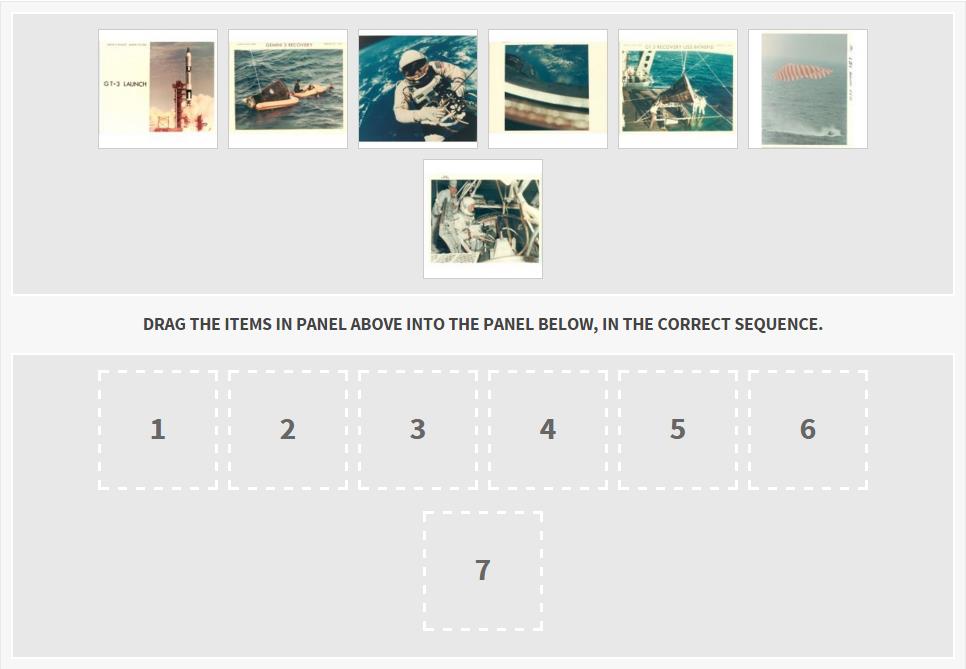The Process of Early Space Flight: The Gemini Program
Finding a Sequence

About this Activity
- Created by:National Archives Education Team
- Historical Era:Postwar United States (1945 to early 1970s)
- Thinking Skill:Chronological Thinking
- Bloom's Taxonomy:Applying
- Grade Level:Upper Elementary
Most students today are familiar with space exploration, NASA’s shuttle program, and the international space station. However, they are unaware how groundbreaking space exploration was to the world during the 1960s — and how different it looked from the more recent shuttle program that they know.
In this activity, students will learn about the process of space flight in the early years of NASA. Students will sequence a series of photographs from the Gemini missions to learn the steps of a space mission from astronaut training to capsule recovery.
https://www.docsteach.org/activities/student/the-process-of-early-space-flight-the-gemini-programIn this activity, students will learn about the process of space flight in the early years of NASA. Students will sequence a series of photographs from the Gemini missions to learn the steps of a space mission from astronaut training to capsule recovery.
Documents in this activity
- Astronaut Edward H. White II's Space Walk on Gemini IV
- Astronaut Buzz Aldrin Entering the 30' Altitude Chamber
- Photograph of Gemini 3 Launch
- Photograph of Gemini 3 Recovery
- Photograph of Gemini 3 Recovery on the U.S.S. Intrepid
- Photograph of Gemini 3 with clouds, Atlantic Ocean and Bermuda in Lower Right
- Gemini 9 Recovery




